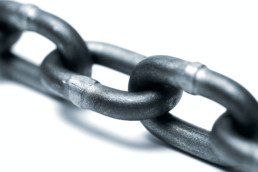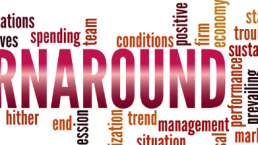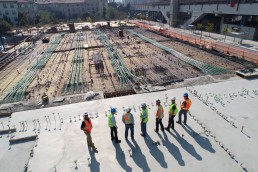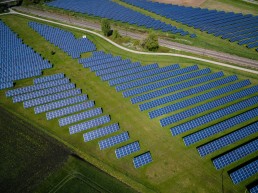Drive your sustainability strategy by assessing your scope 3 emissions!
Drive your sustainability strategy by assessing your scope 3 emissions!
Procurement Value Assessment
Redefining the procurement supply chain
Where does procurement feature in your organisation’s value chain? Traditional priorities focus on sustainable savings, but by maximising the value of your supply chain through strategic end-to-end management you can successfully expand the function into a profit creator and market differentiator.

- Opportunity assessment: quantitative analysis, price benchmarking, contract analysis & baselining
- Stakeholder engagement & business requirements/specifications
- Market analysis & supplier capability assessment
- Sourcing strategy & sourcing plans
- Program set-up, governance, PMO & change management
- Value-based supplier selection. Price vs Value (quality, service, innovation, sustainability, etc.)
- Quick wins (short term results), tendering, market reviews, e-sourcing
- Suppliers negotiations
- Demand management, Buy vs. make (outsourcing), the total cost of ownership approach
- Process improvement
Redefining the procurement supply chain
Pre-sourcing
Our added value lies in ensuring Business Stakeholders support a successful implementation
Through:
- Stakeholder’s pro-active engagement
- Requirements and specifications definition, stakeholders’ feedback and recommendations
- Change management process designed through our sourcing initiatives
- Challenge needs vs. wants
Post-sourcing
We take our customers through the full procurement journey, from stakeholders’ engagement to implementation to ensure benefits remain sustainable
Through:
- Sourcing Communication,
- Sourcing Implementation monitoring
- Compliance (Price, Supplier) & Maverick Buying
- Savings Tracking & Reporting
- Supplier performance Tracking
- Procurement Team and Business stakeholders’ capability building
- Business Stakeholder “education”
If your need help turning your procurement function into a profit creator and market differentiator, get in touch.
our value proposition
curzon in action
Sign up to our insights
Contact our Procurement service line lead,Stephane Boroncelli, to find out more
Procurement Maturity Assessment
Ensuring Procurement generates value to the business
Measuring cost savings as the only means of assessing the effectiveness of your procurement function can only have a finite impact and whilst achieving cost savings remains an imperative mission of Procurement, assessing the maturity of the function ensures it also delivers value to the business, above and beyond price.
Create value with procurement by truly assessing its position within the organisation. Ask yourself…
- Is it seen as an integral division within the organisation?
- What has the procurement function delivered beyond cost savings?
- How has procurement helped the company achieve its sustainability targets or improved the customer experience?
- Is procurement a driver or a barrier to innovation?
- Do you have the right people/capabilities to deliver maximum value?
About the author

Impactful assessment
Through the evaluation of Procurement, assessing the teams status quo, applying industry benchmarks, and aligning the function against best practice, will ensure any value delivered above and beyond cost savings benefits remain sustainable.
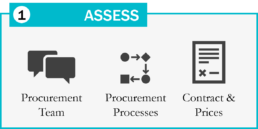
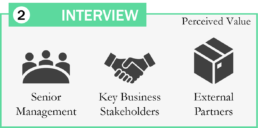
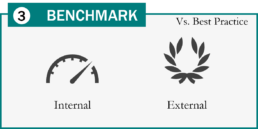
- Procurement assessment piloted against 8 dimensions, from organisational set-up to procurement processes
- Comparative analysis to industry benchmark and best practice
- Quantitative analysis performed on all external expenditure
- Qualitative assessment of the procurement function, through key stakeholders interview and staff assessment
- Spend transparency, including spend categorisation
- Procurement Maturity assessment & price benchmarking
Curzon’s assessment methodology
Our assessment methodology measures the function across all aspects of procurement providing insights in key strategic areas.
(click image to expand)
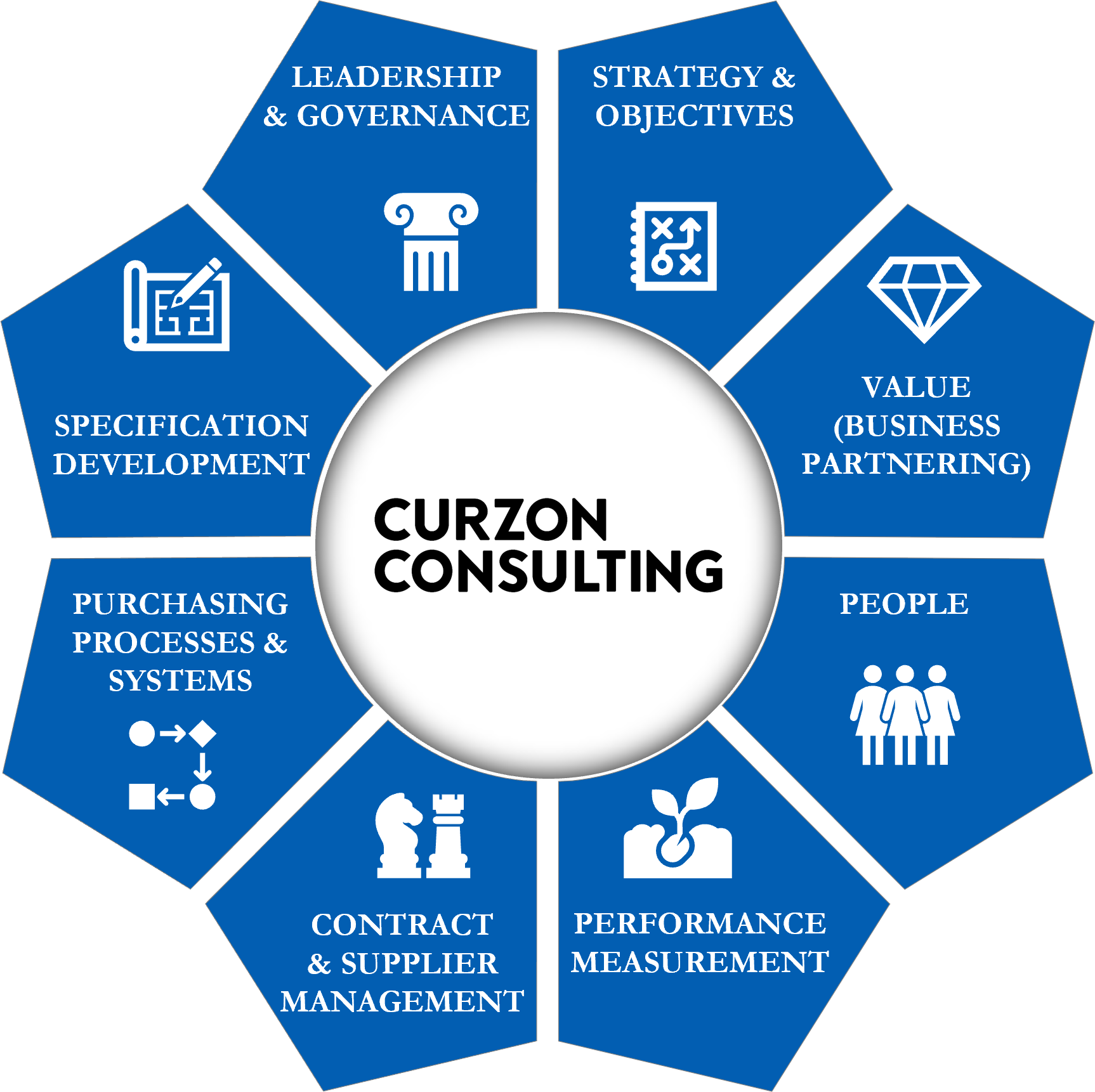
- Does the organisation manage its suppliers and contracts effectively? Are we an attractive account?
- How does the supply base perform? What competitive advantage do they bring to the company?
- How do suppliers and the organisation work together to bring additional value and improvement?
- Do we have efficient processes, systems & tools to support advanced procurement activity?
- How does the organisation use advanced analytics to generate fact based approach?
- Can the organisation demonstrate a prudent and well-planned approach to defining its supply needs?
- What role does procurement play in defining requirements, in influencing needs and challenging status quo?
- How does Procurement compare to similar organisations?
- What are the Top Management expectations towards Procurement
- Is there clear direction from Top Management?
- Do we have the right policies and support in place to enable Procurement?
- What level of maturity does the Procurement Organisation offer?
- Do we have the right Procurement / Category strategy in place?
- What is the perceived value of Procurement within the business?
- Is there a disconnect between Procurement and the business? Why?
- Is procurement a blocker/enabler to our sustainability, innovation strategy?
- What has procurement delivered above and beyond savings?
- Is the organizational structure adapted to Procurement needs?
- Is Procurement’s size adequate?
- Does the organisation have people with sufficient capability to ensure effective performance?
- What are the gaps and training needs? How to increase capability and optimise category strategy
- Does the organisation have a sound approach to assessing and demonstrating its performance?
- What has the procurement function delivered over the last few years?
- What are they expected to deliver in the future?
We believe Procurement should not be a barrier to improved sales, sustainability, or innovation, it should enable these.
With extensive experience in supplier value creation, supply market reviews, seller negotiations and a great track record of delivering cost savings for our clients, I have no doubt we can help you deliver substantial benefits to your organisation.
our value proposition
curzon in action
Sign up to our insights
Contact our Procurement service line lead,Stephane Boroncelli, to find out more
Procurement & Sustainability
Driving your sustainability strategy through procurement
Sustainability and carbon emissions have become a business imperative. If the UK is to meet its long-term net-zero commitment it must adhere to the toughest of targets and reduce national emissions by 78% by 2035.
Setting the scene
The transition to net-zero is a difficult and disruptive undertaking, and, rightfully so, is driving considerable societal concerns.
About the author

36B
2019 Global Greenhouse gas emissions
454m
UK greenhouse gas emissions (t)
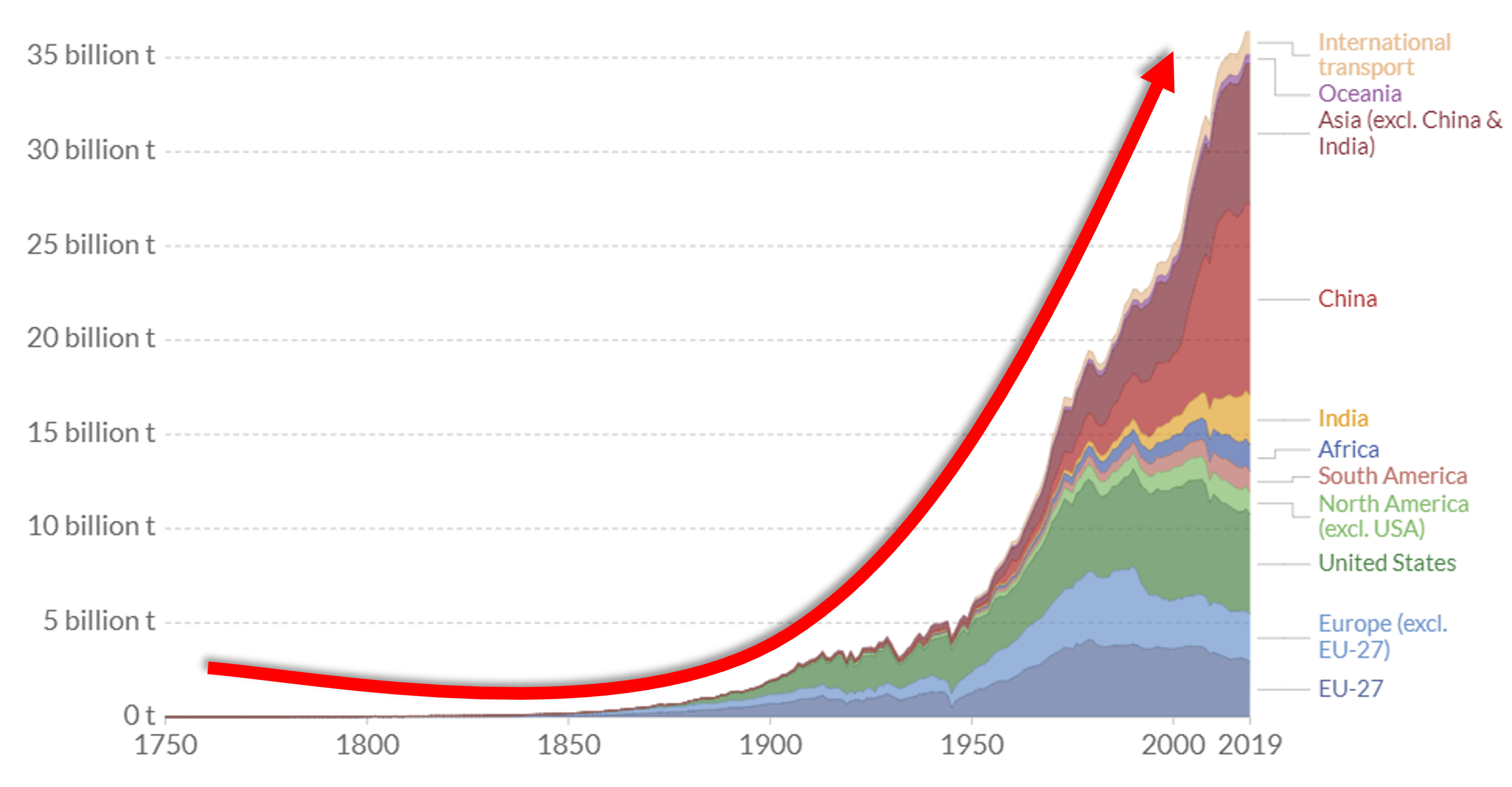
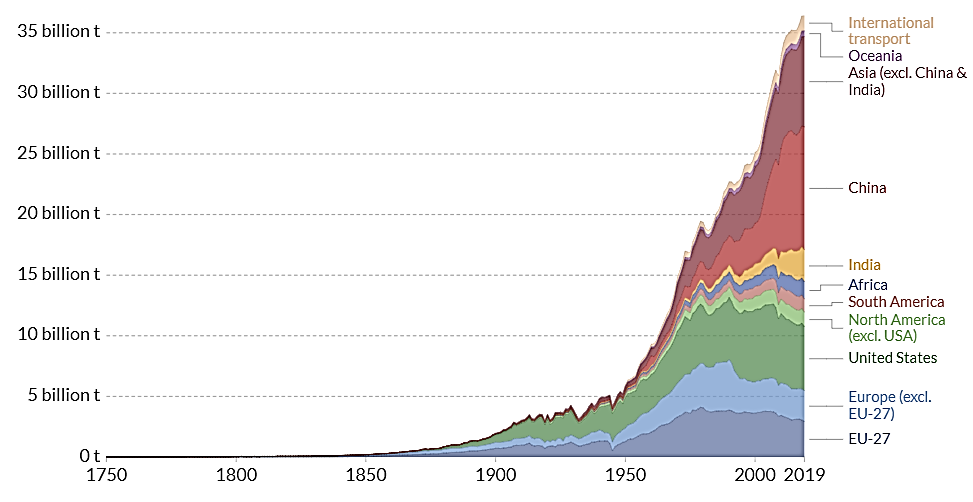
44%
x vs. 2019
With over 20% of the world’s largest corporates already setting net-zero targets, there are substantial expectations for all businesses to play their part and contribute to carbon emission reductions.
17% – 30%
UK business contribution (UK emissions)
Up to 80%
Supply Chain contribution vs. own operations
Supply Chain Consulting Services
We have defined a methodology enabling clients to assess their Supply Chain carbon emissions… and act on it!
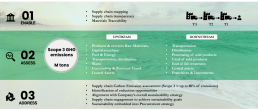
The need to change and deliver these low-carbon objectives goes beyond just the legal obligations, the positive impact on a company’s reputation and the commercial benefits of addressing sustainability are far reaching.
UKs Legal commitment
- Net-zero on all Green House Gas emissions by 2050
- Reduce absolute carbon emissions by 78% by 2035
- Reduce water consumption by 50%,
- Reduce the weight of waste generated by 30%
- Recycle 75% of waste generated by weight by 2020/21
Social Impact
- The adoption and engagement of your sustainability agenda can positively impact brand equity and increase customer loyalty, supporting growth.
- Use your cultural narrative to attract and retain talent
Commercial Benefits
- Developing sustainable procurement practises allows your organisation to future proof against supply shortages and changes in social, economic and environmental factors.
- Meeting and exceeding market demand
- Gaining a competitive advantage
Creating an effective supply chain
We believe sustainability should not be limited to your own operations… your whole supply chain should adapt to your company’s sustainability strategy.
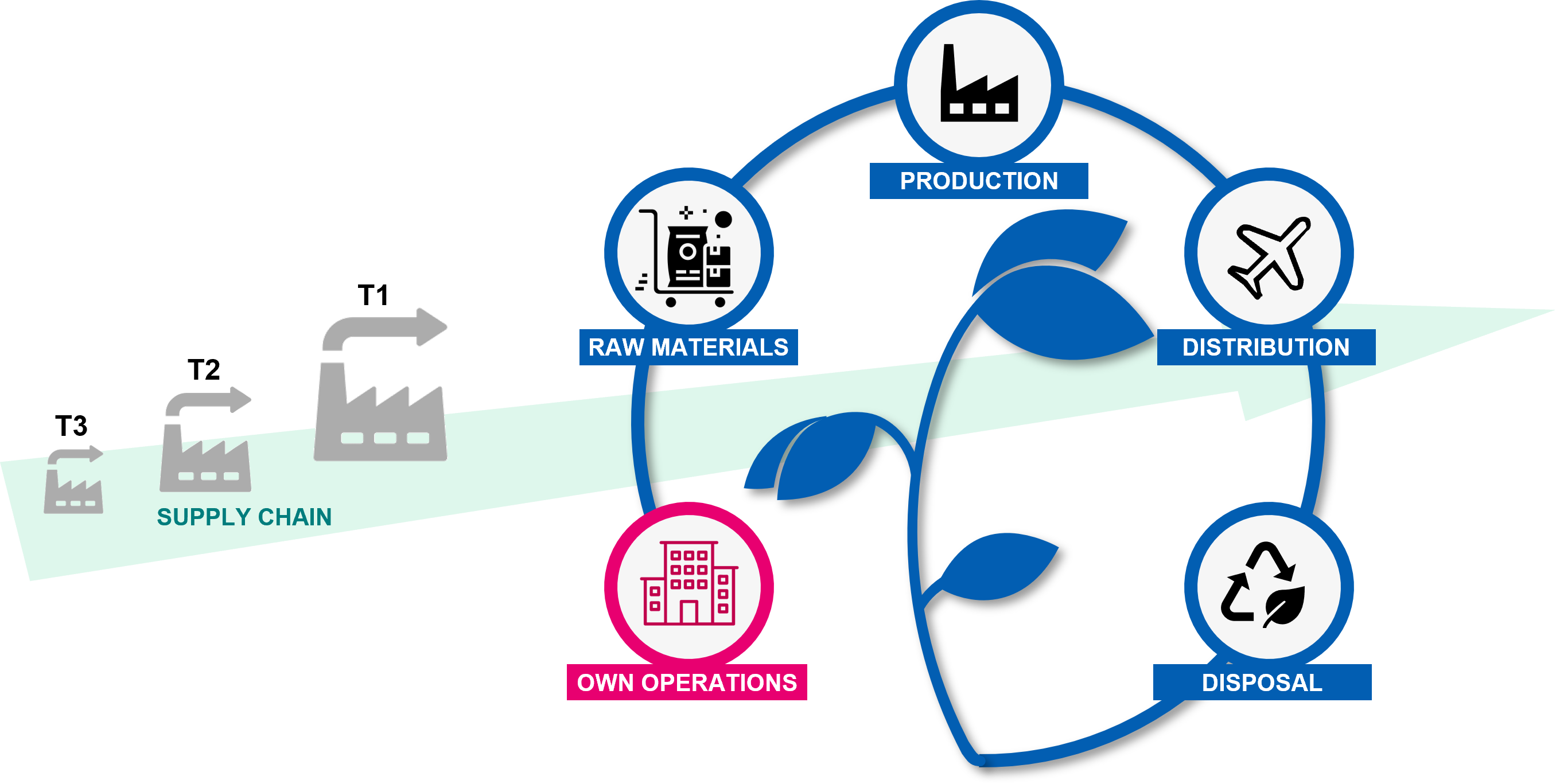
- Own Carbon emissions
- Green Energy
- Water & waste reduction
- Recycling, Zero waste
- Plastic use
- Packaging materials end of product life (recycle, close loop), circular economy
- Transportation means, frequency distance
- Pollution, Water, Energy consumption, Waste
- Type of materials,, chemicals used, amount of waste, production process, carbon footprint
With the support of procurement, organisations can truly influence the overarching sustainability ambitions.
Current Situation Assessment
Establishing your sustainability status quo in critical in calculating what’s required to meet your targets
- Evaluate the carbon footprint of your organisation
- Consider your supply chain sustainability strategy and carbon footprint related to your company’s business
- Assess your company’s sustainability strategy vs. procurement contribution
Sustainability Dashboard

Sustainability commitments require robust governance, transparency, and reporting metrics
- Define sustainability KPI’s against your company’s sustainability strategy & targets
- Develop a detailed dashboard
- Outline and implement monitoring process
- Describe corrective actions as necessary
Sustainability Strategy

Procurement has a major role to play to address sustainability – the procurement of goods and services makes a significant contribution environmentally, socially or economically
- Work with your supply base to define sustainability targets and carbon footprint reduction in line with your company’s objectives
- Monitor and track performance
Drive sustainability
We enable procurement to pro-actively drive sustainability, working with your supply chain to ensure they synchronise to support your company ambitions
ORGANISATION
Is your procurement org enabled to drive the sustainability topic

- ORGANISATION
- PEOPLE
- POLICIES & GOVERNANCE
- SYSTEMS
- PROCESSES
PROCESSES
How is sustainability embedded into your procurement organisation?

- CATEGORY STRATEGY
- SOURCING STRATEGY
- SOURCING REQUIREMENTS
- SLA’S/KPI’S
- SUPPLIER CAPABILITY
- DEMAND MANAGEMENT
SUPPLY CHAIN
Does your supply chain support your sustainability strategy?
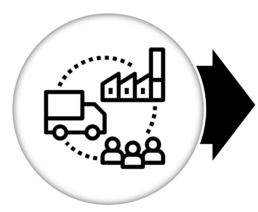
- CARBON EMISSION ASSESSMENT
- SUSTAINABILITY STRATEGY
- TRACEABILITY
- TRANSPARENCY
- QUESTIONNAIRES & AUDITS
- STRATEGY
- CORRECTIVE ACTIONS
MONITORING
How are you tracking against your sustainability targets ?
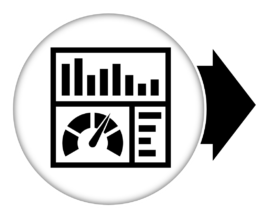
- SUSTAINABILITY KPI’S
- DETAILED DASHBOARDS
- TRACKING & MONITORING
- SMT REPORTING
- COMPLIANCE TO STANDARDS
- LEGAL COMPLIANCE
- ACTION PLAN
"Curzon have done an excellent job first assisting our Ramsay Sante business and then with Ramsay UK to strategically review our approach to procurement and spending benchmarks across our service lines. The strategy, supplier engagement, best practices and data have presented a number of enduring opportunities to strengthen our approach"
our value proposition
curzon in action
Sign up to our insights
Contact our Procurement service line lead,Stephane Boroncelli, to find out more
Stephane Boroncelli
Principal
As an experienced Strategic Sourcing and Procurement Transformation leader, for the last 20 years, Stephane has been helping clients take their procurement organisation to the next level.
He has delivered major engagements across the world, helping clients, to improve their bottom line while optimising value from their supply base. Stephane helps mitigate supply risks in this ever-growing word of uncertainty and align procurement strategies to business imperatives (sustainability, profitability, operational excellence, etc.)
“My vision of procurement is one where key stakeholders are fully engaged and procurement is seen as a key partner. Procurement doesn’t and shouldn’t hinder Business Optimisation, it enables it.”
CONTACT US TO FIND OUT HOW WE CAN HELP
Lou Petch
HR Process Manager
Lou has worked in the HR Department at Curzon for over 10 years, now managing the HR processes for the company.
She has almost 20 year’s experience in the FMCG sector as a Production Planning Manager, having also held positions within Finance and Technical.
“I enjoy being part of a diverse and talented team and hope to help the business grow over the coming years.”
CONTACT US TO FIND OUT HOW WE CAN HELP
Environmental impact reduction in Construction project delivery
Challenge
The building and construction sectors are responsible for c.40% of carbon emissions. Typically, carbon reduction efforts in construction have been focused on the materials or at component-part level.
Curzon supported the client in developing an understanding that all future innovation and digital enablement designed to lower carbon construction processes and ways of working, such as connected autonomous plant (CAP), must address all construction activity and the full project site.
Curzon's approach
Curzon defined ‘The Digital Site’, to provide the enabling infrastructure with an ecosystem of software and hardware technology solutions to function. This will facilitate the most accurate GPS-based automated gearboxes, connected and autonomous plant and more.
Digital site standards are being deliberately designed to enable CAP. The most demanding use-case (electric and autonomous vehicles), can be applied to ensure that any new definition and standard(s) for digital site infrastructure meets the requirements of both the near and potential future for carbon Net-Zero ways of working.

Impact
The Digital Site will be a game-changer:
- All CAP is powered by hybrid or electric technology
- Hydrogen fuel-cell powered vehicles have been trialled, with plans for hydrogen fuel-cell powered excavators by 2023
- Reduced emissions – CO2 (98%) CO, NOx
- Reduced noise emissions
- Many networking solutions offer long-term benefits to local residents
- Lower risk of fuel spills
Contact our Sustainability service line lead,Andrew Wilson, to find out more
related articles
Digital acceleration of CN0 planning in Transport Infrastructure
Challenge
The Infrastructure and Transport sectors play a critical role in the UK’s overall Net-Zero ambitions. The infrastructure industry controls 13% of the UK’s total carbon emissions and influences a further 37%.
55% of the UK’s carbon emissions comes from the usage of transport infrastructure. Transport is the UK’s worst-performing sector for carbon reduction, and the only sector where greenhouse gas emissions are increasing.
Our client intends to reduce its carbon emissions and support the government’s ambition to achieve Net Zero carbon emissions by 2050. However, it’s investment strategy for the coming years is currently incompatible with its legal obligation to reduce its carbon. With the siloed nature of current Initiatives on capturing, measuring & reporting not being effectively geared towards carbon reduction, the introduction of some accelerators was necessary.
Curzon's approach
Curzon understands that Innovation, Digital capability and Data will play a critical role in carbon reduction. Our focus was on accelerating to Net Zero through Digital.
As part of this approach, we sought to ground future Net-Zero plans in reality. One of the most prominent challenges faced by our client’s business (and the wider industry) is efficiency across the asset management lifecycle. We took a deeper look into the digital enablement of productivity.
There is an entire spectrum of on-site productivity management capability areas that can be enhanced through the new or improved application of digital tools. Prioritisation and deployment decisions are driven by functional capability assessments and a multi-dimensional review of each tool’s benefits, use in increasing on-site productivity, deliverability and scalability. Moving forwards, tools can be identified/developed/assessed and their prioritisation should be influenced by what they offer from a carbon reduction perspective.

Impact
We identified a select number of productivity enabling digital tools that can be scaled to offer substantial heavy-duty vehicle performance, load management and fuel efficiency benefits that will have a significant carbon reduction impact.
Contact our Sustainability service line lead,Andrew Wilson, to find out more
related articles
Cost-carbon reduction in Utilities and Property Development
Challenge
Successfully delivering infrastructure associated with water supply and property development growth are two of the most critical features of the UK’s socio-economic landscape. Our client serves the fastest growing area of the country in terms of home building; one in five new homes built in the UK are connected to its network and over 200,000 new homes will be connected in the next 5 years. This will require water infrastructure costing c.£350m.
The business identified recurring sub optimal performance in service delivery to developers and capital expenditure efficiency. Against a backdrop of historic performance failures the ambition was set for the business to be recognised as a true enabler of environmentally sustainable property development growth.
Curzon's approach
Through helping to build a digital business case, sharpen the project strategy and support the organisation in effecting new ways of working, Curzon guided the business in creating a bespoke system.
The system fully digitises the planning and asset delivery processes whilst providing advanced geospatial capabilities. This enables the identification of site cluster for the most efficient, collaborative approach to infrastructure delivery as well as optimum timing on the phasing of infrastructure build activity to align with developer phasing plans.
Curzon identified a number of No Build Solutions (avoiding need to build with early developer engagement) and Low Build Solutions (influencing developer design with early engagement).
In addition, we evaluated commercially and technically innovative alternative water partnership opportunities.

Impact
The client now has the capability to take a strategic approach to asset planning across the entirety of a water resource zone and recycling catchment area, reducing emissions from construction and reducing design costs by identifying site clusters and efficient solution. Better site visibility provides greater insight on the needs of property developers, enabling sustainability initiatives such as water reuse to be encouraged and cutting the cost of late changes.
This transformation has placed the business on track to deliver c£32m or 9.2% in capital delivery savings over the next five years and 15% in operational efficiency.
Contact our Sustainability service line lead,Andrew Wilson, to find out more
related articles
Carbon net zero consensus vs the circular economy
Two core concepts behind carbon net-zero (CN0) are carbon reduction, which focuses on lowering negative greenhouse gas (GHG) emissions, and carbon offsetting, where negative emissions are counterbalanced through activity and investments that theoretically net-off their impact.
Policy and public consensus leave the impression that achieving ‘carbon neutrality’ or CN0 through this reduction and offsetting is the one (or two) stop-shop solution to addressing the world’s climate change and sustainability challenges. Perhaps a bit more constructive challenge to this consensus is required.
Up in the trees
The majority of carbon offsetting is conducted through reforestation or afforestation. There are other more esoteric activities such as targeted investments in developing nations that facilitate reduced GHG emissions, e.g. gifting fuel-efficient stoves to specific communities. However, at present there is particularly limited agreement on the timing of offsetting activities; organisations can theoretically report outcomes years ahead of their implementation.
About the author

Phil Hanson
More about the authorA guessing-game
Whilst meaningful calculations of CO2e emissions are plausible, arguably the calculation of carbon offset is a guessing game. Using reforestation and afforestation as examples: The lack of scientific consensus on the calculation of carbon capture, the finite lifetime of trees, failure to account for existing flora being displaced by trees being planted, the global-warming impact of light absorption by dark forests (especially in previously white, tundra regions) and the insulating impact of organic aerosols released by trees all serve as strong challenges to the generally accepted carbon-capture benefits.
The organisations promoting empirically precise carbon offsetting activities are inevitably motivated to deliver the most significant carbon-capture for a given cost, often driving them to plant fast-growing trees to generate the speediest carbon sinks. Studies, however, have shown that rapid tree growth directly correlates with short life-span, after which the dead tree is either decomposed naturally or burned. This releases the “captured” CO2 and accelerates the point at which carbon capture is permanently reversed. Careless tree-species selection creates further challenges around habitat preservation, for both flora and fauna, with major knock-on consequences for local ecosystems.
Even more fundamentally, the term CO2e may acknowledge the net warming effects of GHGs, but when it comes to carbon capture, it risks oversimplification. Photosynthesis captures CO2, but the remaining GHG groups including nitrous oxides, hydrofluorocarbons and chlorofluorocarbons are not part of the equation; they continue being generated and released unabated and ignored.
It’s all about timing
There are various accounting methods for assessing the impact of timing with respect to money: Discounted Cash Flow, Net Present Value and Internal Rate of Return, are calculations that recognise the importance of timing in financial decision-making. No such calculations exist for carbon offset: Organisations can produce GHGs today, and have a ten-year-plus plan for when these will be offset, without addressing the damage or reduced benefit of the delay. The urgency of action on sustainability is unquestionable, acknowledged but still not fully understood.
Regressive macro-behaviours
The prevalence of the CN0, Sustainability and ESG agenda certainly highlights a widely shared intention. However, albeit perhaps being deliberately extreme in reference points, some of the large-scale actions being marketed highlight branding exercises that deflect from the critical need for more fundamental change in our approach.
Take the whole concept of carbon credits as an example? It can be humorously (and dramatically) argued that these are reminiscent of the medieval Catholic practice of selling “indulgences”; a financial penalty to reduce the religious penance required by heaven for forgiveness. The wealthier you were, the lesser the repercussions for sinning!
However, their regressive macro-behaviours are no laughing matter. Reforestation for example typically takes place ‘behind closed-doors’ and this can have disastrous results. Since 2009, the Kenya Forest Service, backed by EU funding for reforestation, has been forcibly removing and dispossessing the Sengwer people of the Embobut Forest, burning more than 1500 homes in the process, and killing one Sengwer man. This humanitarian disaster, highlights just one facet of the overlooked, problematic underbelly of our approach to CN0.
The BBC and Greenpeace have run articles highlighting the level of waste being exported to Turkey, with estimates of 40% of UK plastic ending up there. In theory, this plastic is exported to be recycled, but the reality is that once those responsible have pocketed their payment, it is simply dumped. Simplistic recycling targets, and an acceptance of devolving accountability is at the root cause of these issues: The National Audit Office was damning in its findings stating in July 2018 that “[The UK’s recycling system] appears to have evolved into a comfortable way for government to meet targets without facing up to the underlying recycling issues. The government has no evidence that the system has encouraged companies to minimise packaging or make it easy to recycle. And it relies on exporting materials to other parts of the world without adequate checks to ensure this material is actually recycled, and without consideration of whether other countries will continue to accept it in the long term.”

Carbon offsetting opportunities are a finite resource
There is a limit to how much reforestation and afforestation can be conducted, both in terms of absolute capacity, or more challengingly, due to financial constraints. The largest and longest-lived type of commercially grown fauna is fruit trees (the largest major group being cherry trees) which typically grow no more than 15m tall, whereas as an example, most pine species consistently grow to 50m or more. Broadly speaking, the taller the tree, the denser the carbon capture for a given area. What this means is that optimal carbon-sink solutions have severely limited meaningful commercial benefit so the land must be procured for offsetting projects, and maintained at cost. At present, there are large swathes of suitable low-price land available, but as these options are exhausted by initial offsetting ventures future projects will have to procure land with commercial uses at much higher costs. Developed nations will likely purchase the majority if not all of the cheap land, leaving developing nations with few or no options available.
Used cooking oil is commonly re-purposed in the UK, burned as biodiesel in lorries, which once again, in isolation is a positive step. However, such is that the appetite for cooking oil derived biodiesel in the UK, that businesses have begun importing it from overseas. Burning marine diesel to transport cooking oil to be burned as biodiesel (which still emits GHGs) all to save on lorry diesel usage? This has a net detrimental environmental effect compared to burning biodiesel at or near its origin and raises obvious questions.
CN0: A single, over-simplified metric
Putting aside carbon off-setting practices, measuring CO2 emissions as the sole metric for success in the sustainability battle means that other negative consequences become fair game. Resource depletion, habitat destruction, loss of biodiversity, water pollution, water poverty and human suffering at times go unchecked. There is particular cause for concern around “green” technologies with a focus on energy generation and energy storage.
- Dependence on cobalt: At present, the highest energy-density commercially available batteries are lithium-ion (Li+) with cobalt-based cathodes and they form the mainstay of almost all consumer electronics where battery size and weight are critical selling points like phones and laptops. More than 55% of the world’s cobalt is mined in DR Congo, where Amnesty International estimate 40,000 child workers are at risk of contact dermatitis, Hard Metal Lung Disease, lethal mine collapses, atrocious working conditions and modern-day slavery.
- Lithium remains a problem: Manufacturers of larger applications of Li+ batteries such as battery-electric cars, have more recently been moving away from cobalt cathodes, such as Tesla in September 2020, but the lithium remains problematic. Lithium is found in three forms in the earth’s crust; in solution (brine) and two mineral formats (pegmatite and sedimentary). Lithium brine forms the majority of global reserves, and is predominantly found in low purity form of 4-6% in deep aquifers (subterranean water reserves) often underneath unique salt-flat habitats. Lithium brine is pumped onto vast plastic sheets to evaporate the water and leave behind lithium salt deposits. Extraction of mineral forms means mining, whilst purification requires sulphuric acid, releasing atmospheric CO2. Modelling by LUT and Augsburg universities suggest earth will exhaust its lithium reserves between 2040 and 2100 dependent upon battery technologies, battery electric vehicle (BEV) manufacturing, lithium recycling and global population variables. This modelling assumes the appetite to destroy virtually all of the world’s largest salt-flat ecosystems.
- Water: Water vapour is part of a positive environmental and atmospheric feedback loop. Unfortunately, due to some of the aforementioned CN0 related activities there are some serious ramifications for water on the horizon. Making full use of global lithium reserves requires (along with rock extraction) removal and evaporation of subterranean lithium brine. Much of this supply is in the form of non–meteoric aquifers; meaning they are not replenished during the course of the hydrologic (water) cycle, instead consisting purely of water formed by geological events early in the earth’s history, from evaporated seas and volcanic activity. These supplies are not renewable. Further still, this removal and evaporation causes the water tables to drop in the associated surrounding areas which has a resulting detrimental effect on wildlife, farming, etc. Lithium brine is typically found beneath evaporated sea-beds which are almost exclusively located in deserts with no viable alternative water source.
- Solar power comes at a price: At the core of solar-power (photovoltaic) technologies is high-purity silicon, extracted from quartz (silicon dioxide). Quartz is mined world-wide, with the greatest concentrations in developing nations, where labour conditions are poor and miners are exposed to carcinogenic respirable-sized quartz, responsible for the diseases silicosis and pulmonary fibrosis. Initial quartz purification requires heating with carbon (often using fossil-fuels) to 2000°C to remove the dioxide component, released as atmospheric CO2. Further purification uses hydrochloric acid, by-producing the incredibly toxic compound silicon tetrachloride, responsible for several environmental disasters in China. Construction of a large solar-power installation (200+ Megawatts) requires upwards of a billion litres of water, and can consume more than 20 million litres per year to keep it sufficiently clean.
- Wind-farms: Wind-farm turbine-blades are typically constructed from varying combinations of glass-fibre, polyester, epoxy and carbon-fibre, the sourcing and processing of which involves significant quantities of volatile organic compounds a class of environmental pollutant compounds hazardous to human health. They have a designed lifespan typically of 25 – 30 years, with first-generation wind-turbines now being decommissioned. In March 2021, New Civil Engineer published an article highlighting the CO2 reduction initiative of re-purposing worn-out wind turbine blades in lieu of steel rebar for construction concrete. Definitely innovative and any diversion from landfill or reduction of carbon is a success. However, as well as being clear on the implication of down-cycling in this manner it is important to seize upon the opportunity to push further and scale such initiatives. For example, contrasting wind-farm turbine blades with other turbine blade types highlights the opportunity for a more holistic approach: Aviation propellers have planned life-cycles, defined by flying hours, and are designed with erosion-shields and sacrificial high-wear parts made of readily-recycled steel and aluminium replaced at scheduled intervals to keep the blades operational, and prolong the lifecycle of the core components.
What to do?
Carbon reducing activities are and must remain a key focus for all. BEVs, sustainable aviation fuel (SAF), biodiesel all make the headlines, and the public are provided with easily accessible solutions like re-usable shopping bags and recycling whilst it seems that the real difficult changes are yet to come.
Perhaps there is a need for a fundamental overhaul of sustainability reporting and metrics to offer real insight. The ‘balanced scorecard’ concept may feel slightly dated or like clichéd management-speak, but a more complete solution to the climate crisis that we face is going to need to be multi-factorial in its application and management, and certainly needs to go beyond the current CN0 status-quo.


